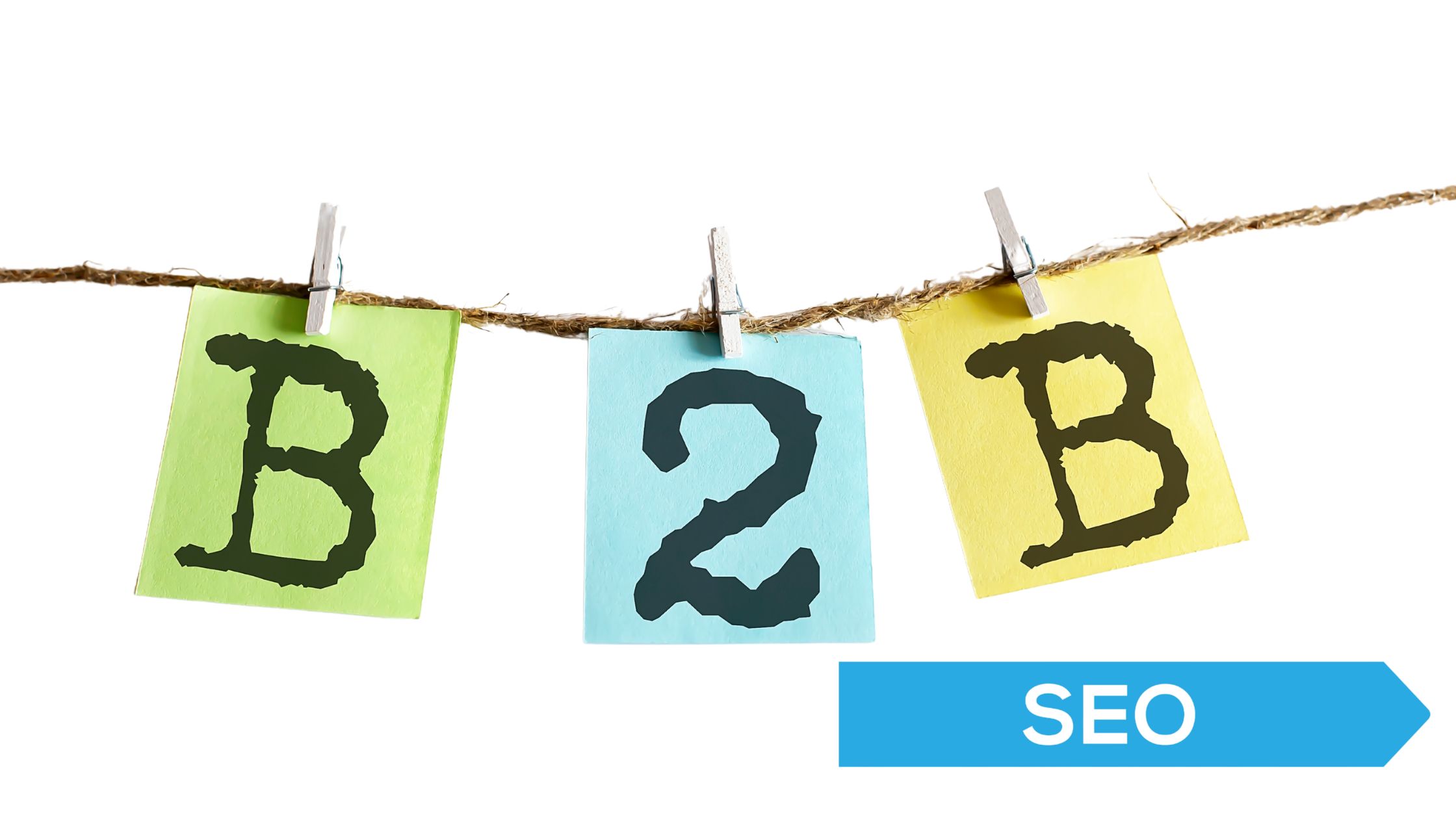Any follow-ups can be nerve-wracking especially when it comes to B2B sales. There are two questions here: what content should be put in follow-up...
Did you know that businesses that rank in the top three positions in search results see an average of 54.4% of all clicks?
After all, more and more B2B buyers are turning to search engines to research and compare products and services before making a purchase. But with so much competition out there, how can you make sure your business stands out?
Answer: Search Engine Optimization (SEO). SEO is the practice of optimizing your website and online content to rank higher in search engine results and attract more qualified traffic.
But where do you start? It can be overwhelming to navigate the constantly-evolving world of SEO. That’s why we’ve put together this blog post on effective B2B SEO strategies for 2023.
So let’s dive in and start optimizing your B2B website for success in the coming year!
What is B2B SEO?

Before delving any deeper, let’s understand what is SEO for B2B.
B2B SEO (Business-to-Business Search Engine Optimization) is the practice of optimizing a website to rank higher in search engine results for keywords related to the products or services that a business offers to other businesses. The goal of B2B SEO is to attract more qualified leads to a company’s website and increase the likelihood of converting those leads into customers.
B2B SEO involves a variety of tactics, including keyword research and optimization, content creation and optimization, link building, technical SEO, and more. By implementing these strategies, a B2B company can improve its visibility in search results, drive more traffic to its website, and ultimately generate more leads and sales.
Difference Between B2B and B2C SEO

B2B (Business-to-Business) and B2C (Business-to-Consumer) SEO are similar in that they both aim to improve a company’s website ranking in search engine results and drive more traffic and leads to the website. However, there are some key differences between the two types of SEO:
>Target audience: B2B SEO is focused on attracting other businesses as customers, while B2C SEO is focused on attracting individual consumers.
>Keywords: B2B keywords are often more technical and industry-specific, while B2C keywords are more general and consumer-oriented.
>Buyer journey: B2B purchasing decisions are typically more complex and involve more stakeholders, so the buyer journey is longer and requires more research and consideration. B2C purchasing decisions are often more impulsive and based on emotions.
>Content strategy: B2B content is often more informative and educational, while B2C content is more promotional and sales-oriented.
>Link building: B2B link building often involves reaching out to industry websites and publications, while B2C link building may involve partnerships with influencers and lifestyle brands.
Importance of B2B SEO in 2023
B2B SEO is important for businesses that sell products or services to other businesses because it helps to increase the visibility of their website in search engine results, which can lead to more qualified leads and sales.
As per a study conducted among B2B marketers, a staggering 61% reported that SEO and organic traffic yield more leads than any other marketing effort. This underscores the crucial role that B2B SEO plays in driving qualified traffic to a website and converting those visitors into paying customers.
Investing in B2B SEO can also have a significant return on investment (ROI). In fact, a recent study revealed that SEO for a B2B SaaS industry has an average ROI of 702%, which is higher than the ROI of traditional outbound marketing tactics. This demonstrates the value of investing in B2B SEO as a way to drive leads and sales for a business.
5 Tips for Creating an Effective B2B SEO Strategy
Developing a successful B2B SEO strategy takes effort and customization to fit your business needs. While there isn’t a one-size-fits-all approach, there are steps you can take to improve your results. Here are five tips to consider when creating a B2B SEO plan:
1. Creating Buyer Personas
A buyer persona is a fictional representation of your potential customer based on real data and research about your target audience. Creating buyer personas can help you to better understand the needs, goals, and challenges of your target customers and create marketing and sales strategies that are tailored to their needs.
To create a buyer persona, you need to collect data from various sources such as customer surveys, interviews, and website analytics. Look for patterns in this data to identify common characteristics, needs, and challenges among your target audience. Then, use this information to create a detailed profile of your ideal customer.
Once you have created your buyer personas, you can use them to guide your marketing and sales efforts. For example, you can use your buyer personas to create targeted marketing campaigns, develop relevant content, and design a website that resonates with your target audience.
2. Mapping Out Your Keyword Content Strategy
To map out your keyword content strategy, start by conducting keyword research to identify the terms and phrases that your target audience is using to find products or services like yours. Look for keywords with high search volume and low competition, as these are more likely to drive targeted traffic to your website.
One effective approach to keyword content strategy is to use topic clusters, which involve organizing your content around specific themes and subtopics. This allows you to create a cohesive content strategy that covers all aspects of a particular topic and helps search engines understand the focus of your website.
To create a topic cluster, start by identifying a primary keyword or phrase that represents the main theme of your content. Then, create multiple pieces of content that cover subtopics related to this primary keyword. Use header tags and internal linking to connect these subtopics to the primary keyword and to each other, creating a hierarchy of information.
Image Source – HubSpot
In addition to targeting specific keywords, it’s also important to create high-quality, valuable content that addresses the needs and questions of your target audience.
Image Source – SETUPAD
By combining targeted keywords with valuable content and organizing it into a topic cluster, you can improve your website’s visibility in search results and attract more qualified leads.
3. Build an SEO and Content Marketing Blueprint
An SEO and content marketing blueprint is a plan that outlines the steps and tactics that a business will use to improve its website’s visibility in search results and attract more qualified leads through content marketing.
Here are the steps to building an SEO and content marketing blueprint as a B2B SEO strategy:
Identify your target audience and keywords: Understand who your ideal customers are and what they are searching for. Conduct keyword research to identify the terms and phrases that your target audience is using to find products or services like yours.
Define your content marketing goals: Determine what you want to achieve with your content marketing efforts, such as enhancing brand awareness, getting leads, or improving customer retention.
Create a content calendar: Plan out the types of content you will create, how often you will publish it, and where you will publish it.
Develop a content creation process: Establish a process for creating high-quality, valuable content that addresses the needs and questions of your target audience and helps to establish your company as a thought leader in your industry.
4. Build High-Quality Backlinks

To boost your website’s credibility and ranking in search results, you’ll want to score some sweet backlinks from reputable sources in your industry. A backlink is essentially a little shoutout from another website, telling search engines that your site is worth checking out. The more high-quality backlinks you have, the more authoritative your website appears to search engines.
In fact, a study by Backlinko and Ahrefs revealed that the #1 result in Google has an average of 3.8x more backlinks than positions #2 to #10. This highlights the importance of building high-quality backlinks as a way to improve your website’s ranking and attract more qualified leads.
There are a few tried-and-true ways to snag some sweet backlinks:
> Write guest articles for other websites in your industry – This is a great opportunity to showcase your expertise and provide valuable information to your target audience. Just be sure to include a link back to your website in the byline or within the article.
> Create shareable content – If your content is interesting, informative, and valuable, it’s more likely to get shared by other websites and bloggers. The more your content is shared, the more backlinks you’ll earn.
> Participate in online communities – Get involved in online communities and forums related to your industry and include a link to your website in your signature or profile. This can help to drive targeted traffic to your website and earn you some backlinks along the way.
> Connect with influencers – Influencers have a loyal following and can help to amplify your message. Reach out to influencers in your industry and see if they’ll share your content or link to your website.
5. Capture Leads with Landing Pages
Product or service landing pages are standalone pages on a website that are designed to promote and sell a specific product or service. These pages are an important element of a B2B SEO strategy because they provide a focused, relevant, and compelling message to potential customers who are searching for the products or services that a business offers.
Here are some tips for creating and optimizing product or service landing pages:
> Create compelling headlines and subheadings: Use compelling headlines and subheadings to grab the attention of your target audience and communicate the value of your product or service.
>Use bullet points to highlight key features and benefits: Use bullet points to clearly and concisely communicate the key features and benefits of your product or service.
>Include social proof: Use customer testimonials, ratings, and reviews to build trust and credibility with your target audience.
>Use high-quality images and videos: Use high-quality images and videos to showcase your product or service in action and help potential customers visualize themselves using it.
>Use a clear call-to-action: Use a clear call-to-action, such as “Learn more” or “Sign up now,” to encourage potential customers to take the next step.
Top 5 B2B SEO Trends for 2023
Staying up-to-date on the latest search engine optimization (SEO) trends is essential for businesses that want to maintain an effective B2B SEO strategy. Here are some key trends to consider in 2023:
1. Voice Search Optimization
As the use of voice assistants and smart speakers increases, optimizing for voice search is likely to become more important. This may include using long-tail keywords and providing clear, concise information on your website to improve the chances of your content being featured in voice search results.
2. Artificial Intelligence and Machine Learning
Some experts predict that the use of artificial intelligence and machine learning in SEO will continue to grow in the coming years. This may include the use of AI to analyze and optimize website content, as well as to identify and target relevant keywords.
3. Structured Data and Schema Markup
Utilizing structured data and schema markup can help search engines understand the content and context of your website, which can improve its visibility in search results.
4. User Experience and Page Speed

Providing a positive user experience and fast loading times are likely to continue to be important ranking factors for search engines. This may include optimizing images, using caching techniques, and minimizing the use of large or unnecessary files.
5. Video Content

Video content is becoming increasingly popular and is likely to continue to be an important part of SEO strategies in the future. This may include optimizing video titles, descriptions, and tags, as well as transcribing video content and including it on the website.
Conclusion
By now, you should have a solid understanding of how to optimize your website and online content to improve your search engine rankings and drive more qualified traffic. But the journey doesn’t have to end here.
Now it’s time to put these strategies into action. Take the knowledge you’ve gained from this blog post and start implementing it on your own B2B website.
And if you ever need a helping hand or want to learn more about B2B SEO, don’t hesitate to reach out. We’re here to support you on your journey to success. So go forth and conquer the search engine rankings in 2023!




